Australian Airline System Report
VerifiedAdded on 2019/10/08
|7
|986
|338
Report
AI Summary
This report proposes an information system for Australian Airlines to improve efficiency and customer experience. It addresses the need for an online booking system, highlighting benefits like reduced manual work, increased efficiency, better control, and enhanced security. The report includes a detailed cost analysis, estimating a total cost of $78,900, and a schedule analysis outlining a 46-day project timeline. The system's scope includes online ticket booking, seat availability checks, flight and aircraft details management, and administrative controls. The report also includes diagrams (Use Case, Sequence, DFD Level 0, Context) although these are not provided in the text. Finally, it cites relevant systems analysis and design textbooks.
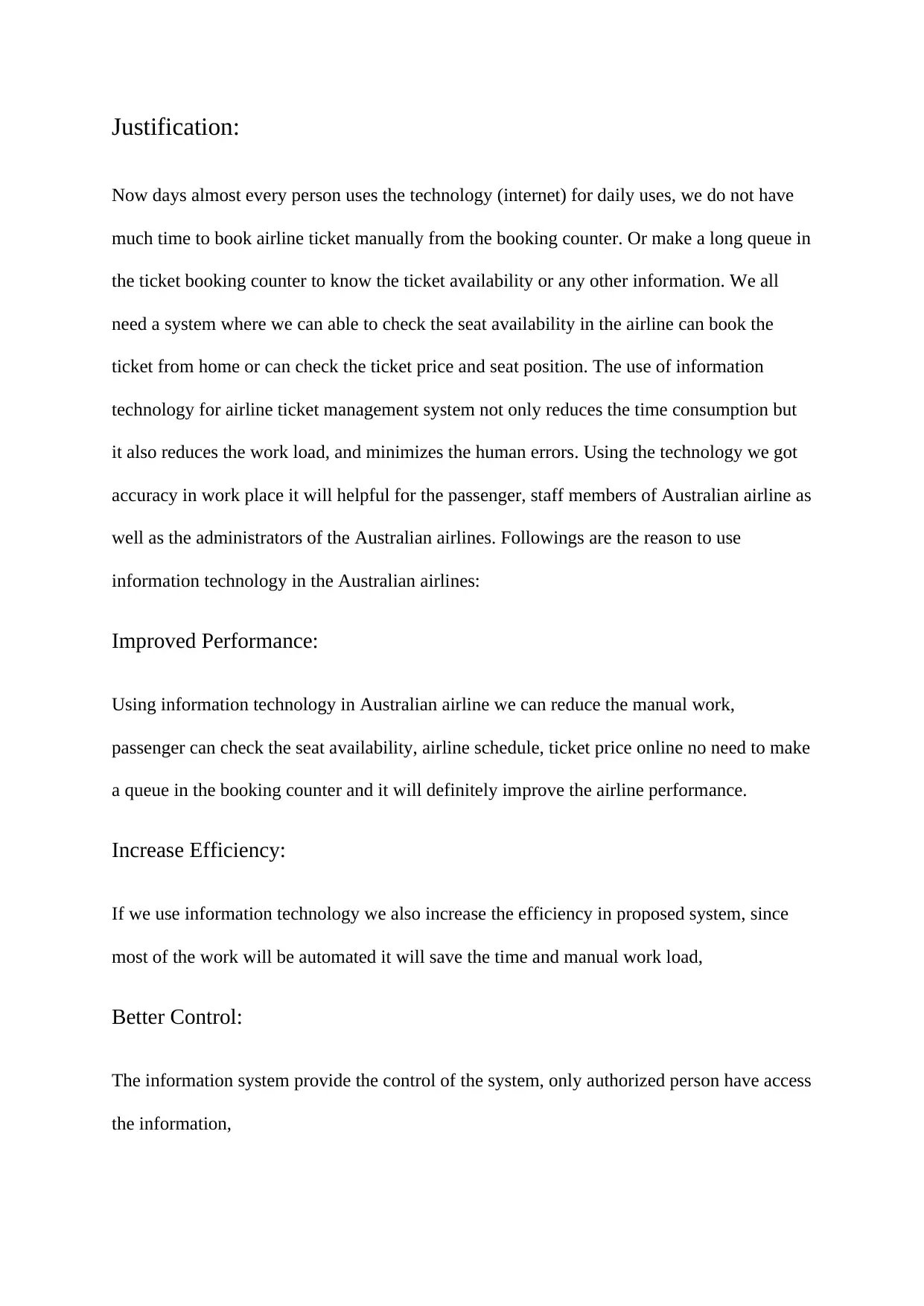
Justification:
Now days almost every person uses the technology (internet) for daily uses, we do not have
much time to book airline ticket manually from the booking counter. Or make a long queue in
the ticket booking counter to know the ticket availability or any other information. We all
need a system where we can able to check the seat availability in the airline can book the
ticket from home or can check the ticket price and seat position. The use of information
technology for airline ticket management system not only reduces the time consumption but
it also reduces the work load, and minimizes the human errors. Using the technology we got
accuracy in work place it will helpful for the passenger, staff members of Australian airline as
well as the administrators of the Australian airlines. Followings are the reason to use
information technology in the Australian airlines:
Improved Performance:
Using information technology in Australian airline we can reduce the manual work,
passenger can check the seat availability, airline schedule, ticket price online no need to make
a queue in the booking counter and it will definitely improve the airline performance.
Increase Efficiency:
If we use information technology we also increase the efficiency in proposed system, since
most of the work will be automated it will save the time and manual work load,
Better Control:
The information system provide the control of the system, only authorized person have access
the information,
Now days almost every person uses the technology (internet) for daily uses, we do not have
much time to book airline ticket manually from the booking counter. Or make a long queue in
the ticket booking counter to know the ticket availability or any other information. We all
need a system where we can able to check the seat availability in the airline can book the
ticket from home or can check the ticket price and seat position. The use of information
technology for airline ticket management system not only reduces the time consumption but
it also reduces the work load, and minimizes the human errors. Using the technology we got
accuracy in work place it will helpful for the passenger, staff members of Australian airline as
well as the administrators of the Australian airlines. Followings are the reason to use
information technology in the Australian airlines:
Improved Performance:
Using information technology in Australian airline we can reduce the manual work,
passenger can check the seat availability, airline schedule, ticket price online no need to make
a queue in the booking counter and it will definitely improve the airline performance.
Increase Efficiency:
If we use information technology we also increase the efficiency in proposed system, since
most of the work will be automated it will save the time and manual work load,
Better Control:
The information system provide the control of the system, only authorized person have access
the information,
Paraphrase This Document
Need a fresh take? Get an instant paraphrase of this document with our AI Paraphraser
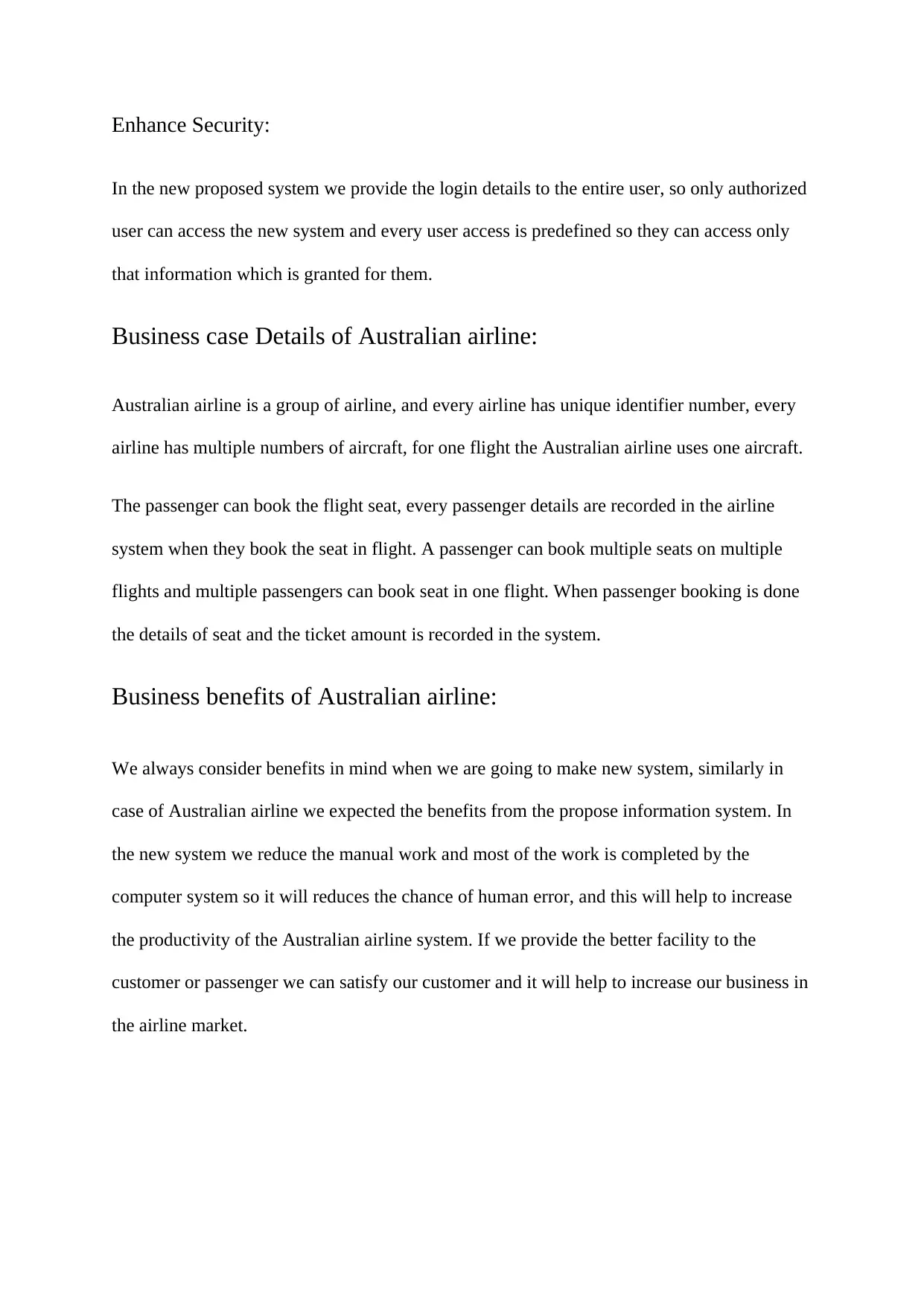
Enhance Security:
In the new proposed system we provide the login details to the entire user, so only authorized
user can access the new system and every user access is predefined so they can access only
that information which is granted for them.
Business case Details of Australian airline:
Australian airline is a group of airline, and every airline has unique identifier number, every
airline has multiple numbers of aircraft, for one flight the Australian airline uses one aircraft.
The passenger can book the flight seat, every passenger details are recorded in the airline
system when they book the seat in flight. A passenger can book multiple seats on multiple
flights and multiple passengers can book seat in one flight. When passenger booking is done
the details of seat and the ticket amount is recorded in the system.
Business benefits of Australian airline:
We always consider benefits in mind when we are going to make new system, similarly in
case of Australian airline we expected the benefits from the propose information system. In
the new system we reduce the manual work and most of the work is completed by the
computer system so it will reduces the chance of human error, and this will help to increase
the productivity of the Australian airline system. If we provide the better facility to the
customer or passenger we can satisfy our customer and it will help to increase our business in
the airline market.
In the new proposed system we provide the login details to the entire user, so only authorized
user can access the new system and every user access is predefined so they can access only
that information which is granted for them.
Business case Details of Australian airline:
Australian airline is a group of airline, and every airline has unique identifier number, every
airline has multiple numbers of aircraft, for one flight the Australian airline uses one aircraft.
The passenger can book the flight seat, every passenger details are recorded in the airline
system when they book the seat in flight. A passenger can book multiple seats on multiple
flights and multiple passengers can book seat in one flight. When passenger booking is done
the details of seat and the ticket amount is recorded in the system.
Business benefits of Australian airline:
We always consider benefits in mind when we are going to make new system, similarly in
case of Australian airline we expected the benefits from the propose information system. In
the new system we reduce the manual work and most of the work is completed by the
computer system so it will reduces the chance of human error, and this will help to increase
the productivity of the Australian airline system. If we provide the better facility to the
customer or passenger we can satisfy our customer and it will help to increase our business in
the airline market.
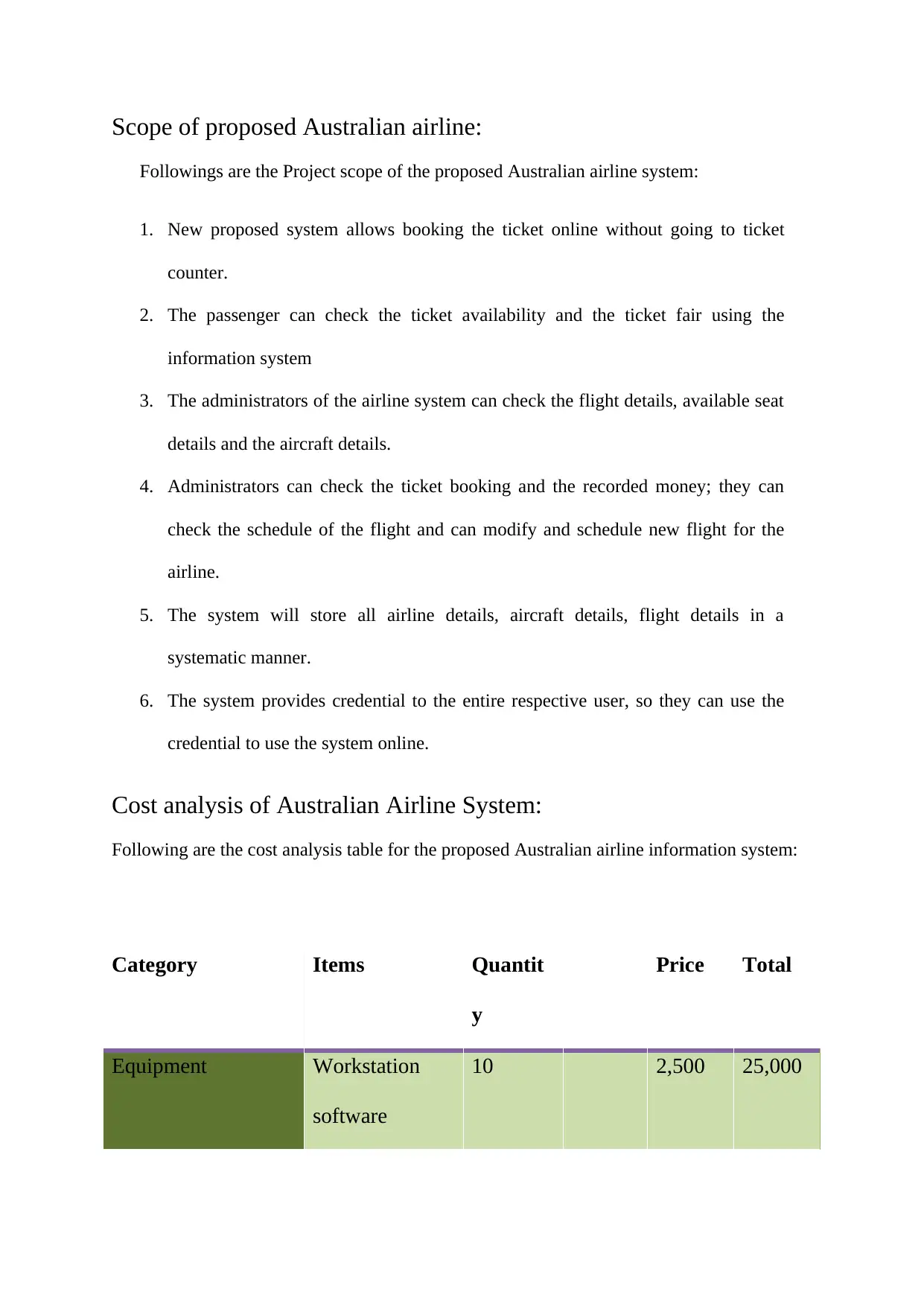
Scope of proposed Australian airline:
Followings are the Project scope of the proposed Australian airline system:
1. New proposed system allows booking the ticket online without going to ticket
counter.
2. The passenger can check the ticket availability and the ticket fair using the
information system
3. The administrators of the airline system can check the flight details, available seat
details and the aircraft details.
4. Administrators can check the ticket booking and the recorded money; they can
check the schedule of the flight and can modify and schedule new flight for the
airline.
5. The system will store all airline details, aircraft details, flight details in a
systematic manner.
6. The system provides credential to the entire respective user, so they can use the
credential to use the system online.
Cost analysis of Australian Airline System:
Following are the cost analysis table for the proposed Australian airline information system:
Category Items Quantit
y
Price Total
Equipment Workstation
software
10 2,500 25,000
Followings are the Project scope of the proposed Australian airline system:
1. New proposed system allows booking the ticket online without going to ticket
counter.
2. The passenger can check the ticket availability and the ticket fair using the
information system
3. The administrators of the airline system can check the flight details, available seat
details and the aircraft details.
4. Administrators can check the ticket booking and the recorded money; they can
check the schedule of the flight and can modify and schedule new flight for the
airline.
5. The system will store all airline details, aircraft details, flight details in a
systematic manner.
6. The system provides credential to the entire respective user, so they can use the
credential to use the system online.
Cost analysis of Australian Airline System:
Following are the cost analysis table for the proposed Australian airline information system:
Category Items Quantit
y
Price Total
Equipment Workstation
software
10 2,500 25,000
⊘ This is a preview!⊘
Do you want full access?
Subscribe today to unlock all pages.

Trusted by 1+ million students worldwide
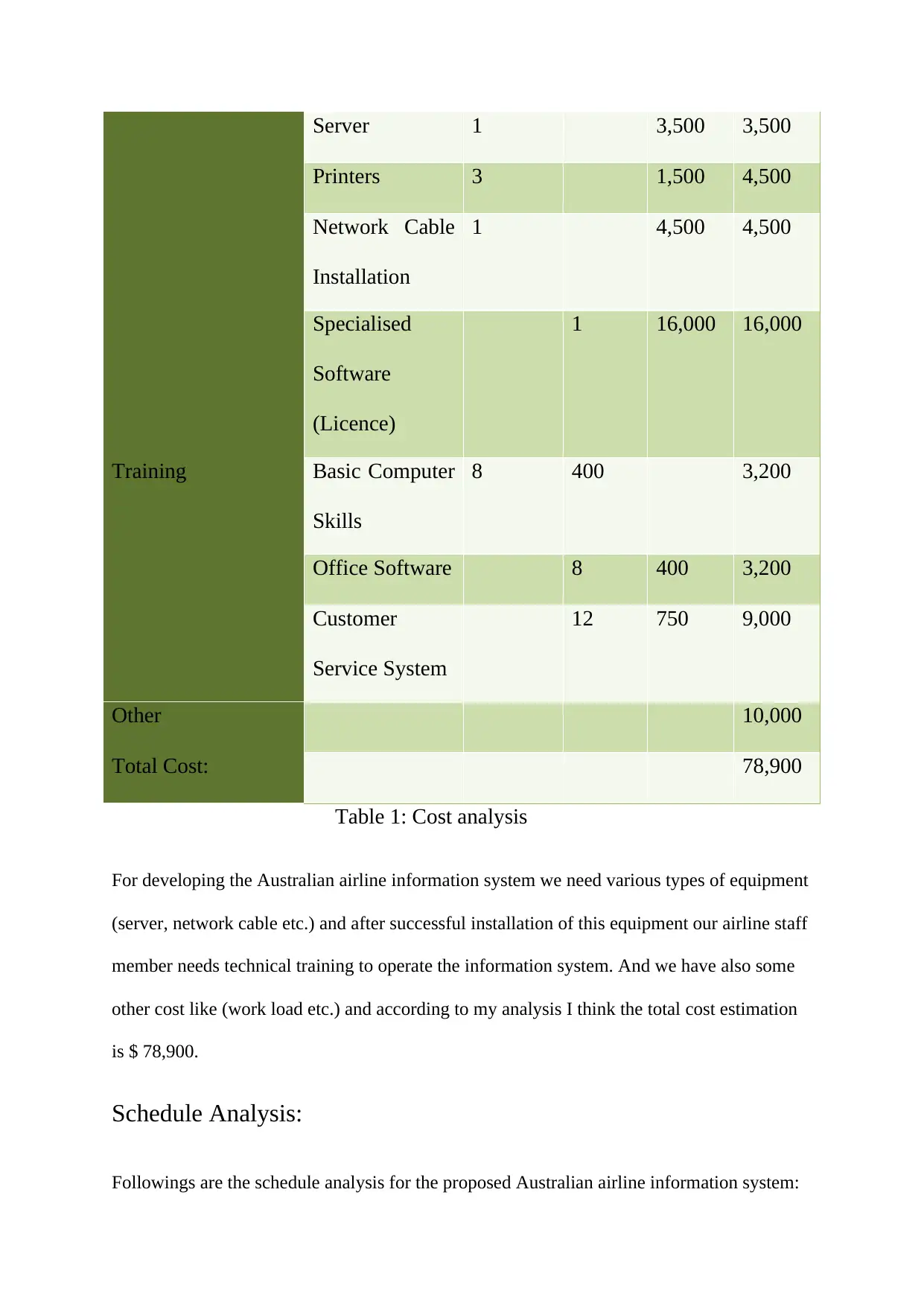
Server 1 3,500 3,500
Printers 3 1,500 4,500
Network Cable
Installation
1 4,500 4,500
Specialised
Software
(Licence)
1 16,000 16,000
Training Basic Computer
Skills
8 400 3,200
Office Software 8 400 3,200
Customer
Service System
12 750 9,000
Other 10,000
Total Cost: 78,900
Table 1: Cost analysis
For developing the Australian airline information system we need various types of equipment
(server, network cable etc.) and after successful installation of this equipment our airline staff
member needs technical training to operate the information system. And we have also some
other cost like (work load etc.) and according to my analysis I think the total cost estimation
is $ 78,900.
Schedule Analysis:
Followings are the schedule analysis for the proposed Australian airline information system:
Printers 3 1,500 4,500
Network Cable
Installation
1 4,500 4,500
Specialised
Software
(Licence)
1 16,000 16,000
Training Basic Computer
Skills
8 400 3,200
Office Software 8 400 3,200
Customer
Service System
12 750 9,000
Other 10,000
Total Cost: 78,900
Table 1: Cost analysis
For developing the Australian airline information system we need various types of equipment
(server, network cable etc.) and after successful installation of this equipment our airline staff
member needs technical training to operate the information system. And we have also some
other cost like (work load etc.) and according to my analysis I think the total cost estimation
is $ 78,900.
Schedule Analysis:
Followings are the schedule analysis for the proposed Australian airline information system:
Paraphrase This Document
Need a fresh take? Get an instant paraphrase of this document with our AI Paraphraser
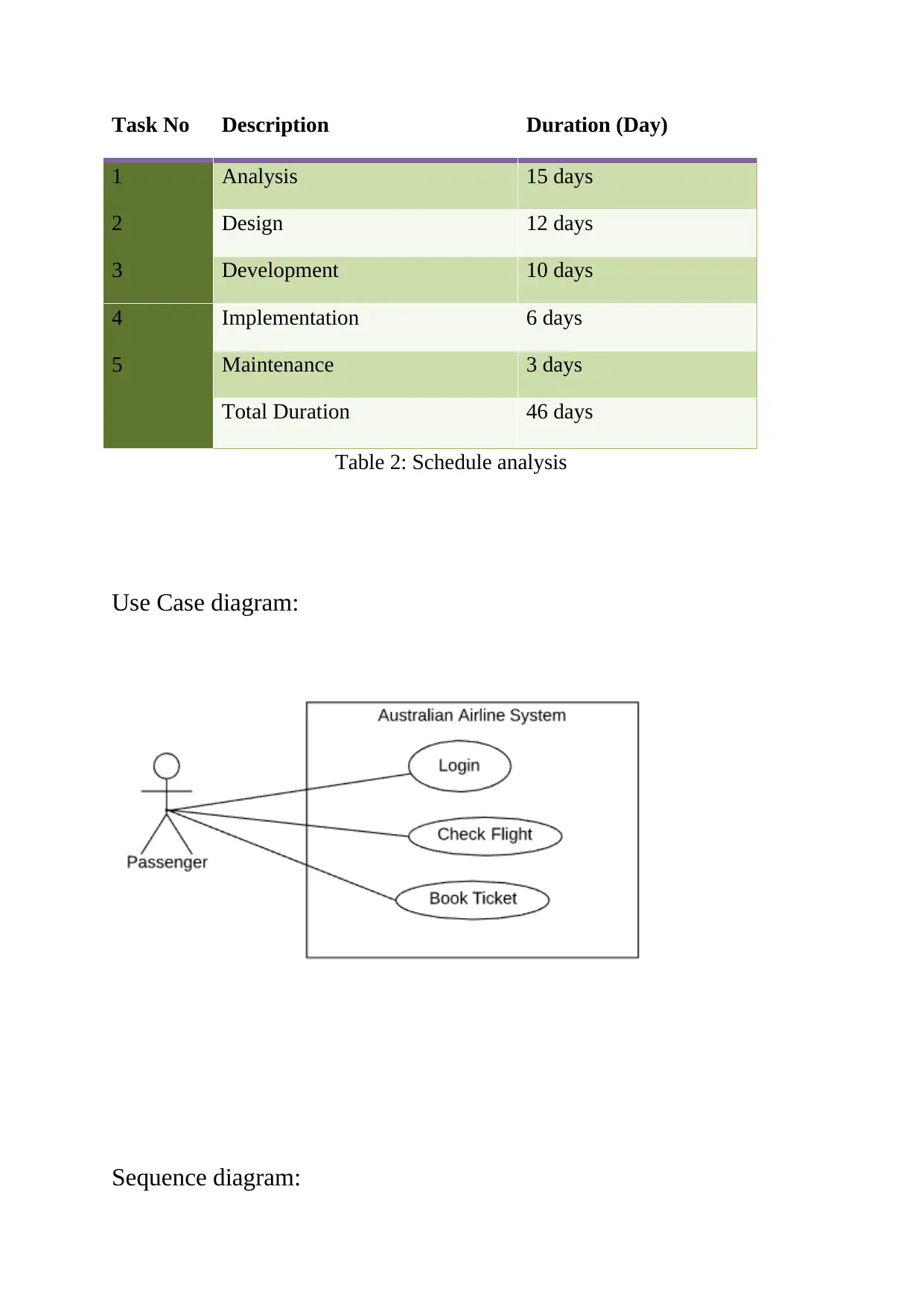
Task No Description Duration (Day)
1 Analysis 15 days
2 Design 12 days
3 Development 10 days
4 Implementation 6 days
5 Maintenance 3 days
Total Duration 46 days
Table 2: Schedule analysis
Use Case diagram:
Sequence diagram:
1 Analysis 15 days
2 Design 12 days
3 Development 10 days
4 Implementation 6 days
5 Maintenance 3 days
Total Duration 46 days
Table 2: Schedule analysis
Use Case diagram:
Sequence diagram:
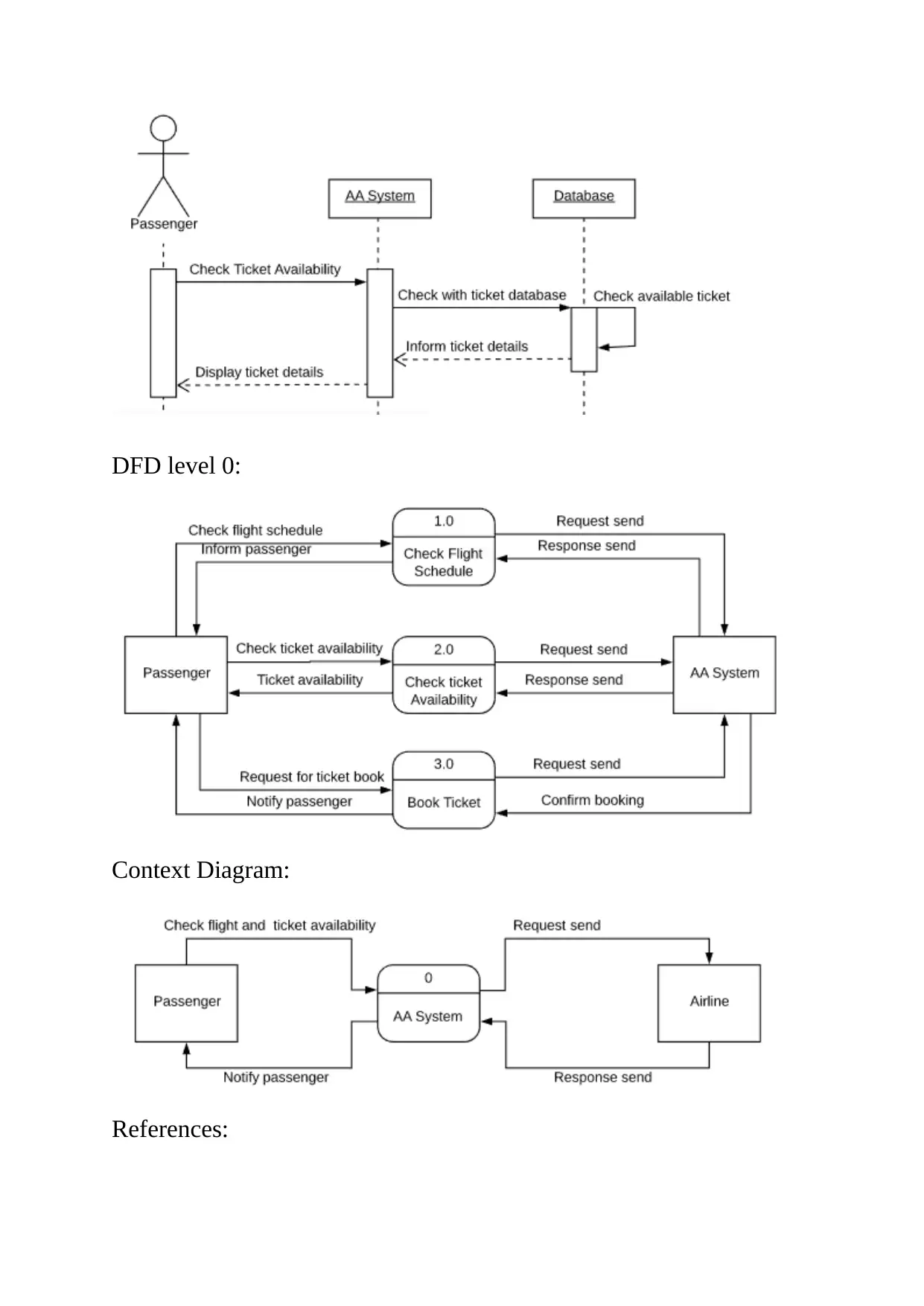
DFD level 0:
Context Diagram:
References:
Context Diagram:
References:
⊘ This is a preview!⊘
Do you want full access?
Subscribe today to unlock all pages.

Trusted by 1+ million students worldwide
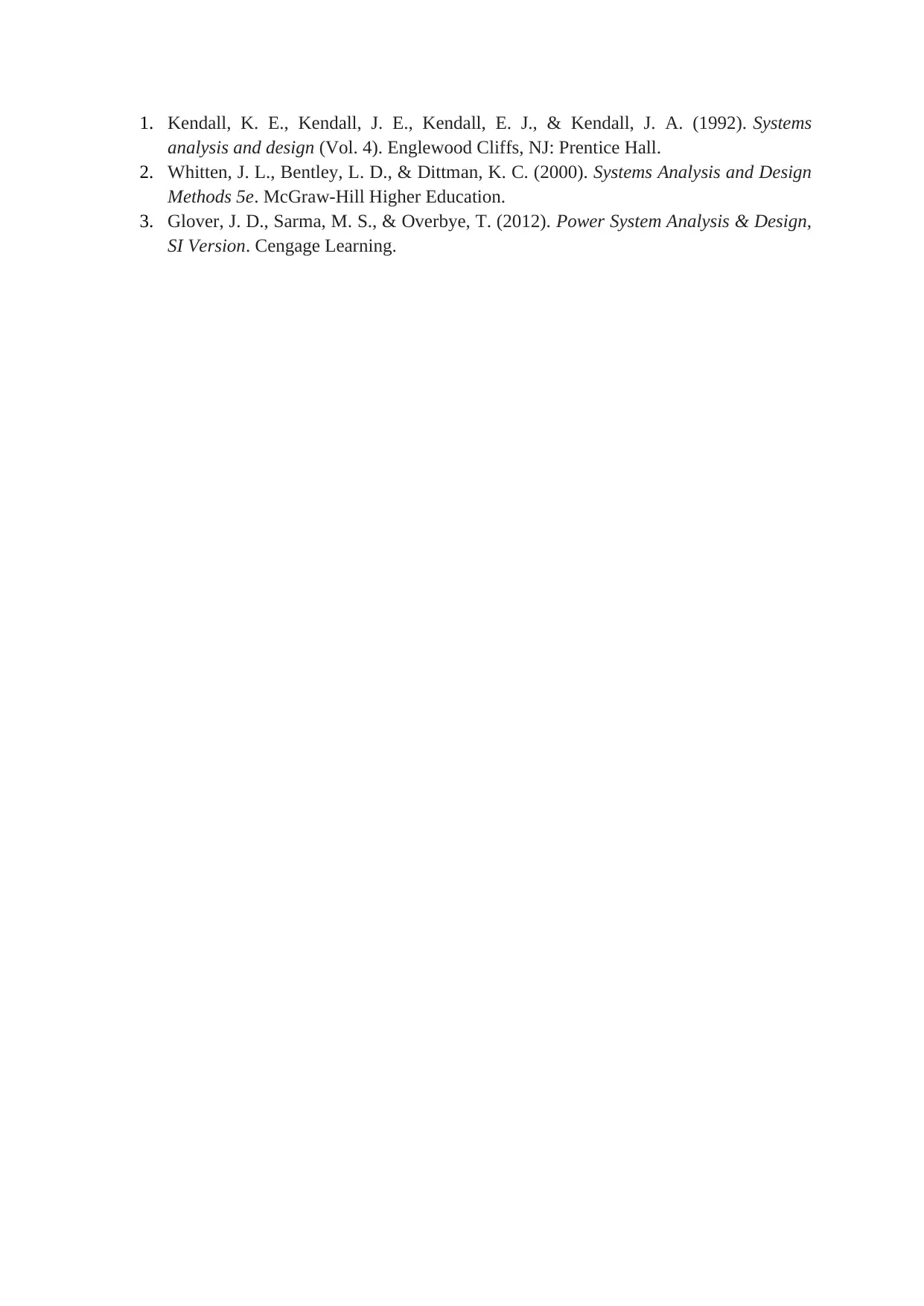
1. Kendall, K. E., Kendall, J. E., Kendall, E. J., & Kendall, J. A. (1992). Systems
analysis and design (Vol. 4). Englewood Cliffs, NJ: Prentice Hall.
2. Whitten, J. L., Bentley, L. D., & Dittman, K. C. (2000). Systems Analysis and Design
Methods 5e. McGraw-Hill Higher Education.
3. Glover, J. D., Sarma, M. S., & Overbye, T. (2012). Power System Analysis & Design,
SI Version. Cengage Learning.
analysis and design (Vol. 4). Englewood Cliffs, NJ: Prentice Hall.
2. Whitten, J. L., Bentley, L. D., & Dittman, K. C. (2000). Systems Analysis and Design
Methods 5e. McGraw-Hill Higher Education.
3. Glover, J. D., Sarma, M. S., & Overbye, T. (2012). Power System Analysis & Design,
SI Version. Cengage Learning.
1 out of 7
Related Documents
Your All-in-One AI-Powered Toolkit for Academic Success.
+13062052269
info@desklib.com
Available 24*7 on WhatsApp / Email
![[object Object]](/_next/static/media/star-bottom.7253800d.svg)
Unlock your academic potential
Copyright © 2020–2025 A2Z Services. All Rights Reserved. Developed and managed by ZUCOL.





